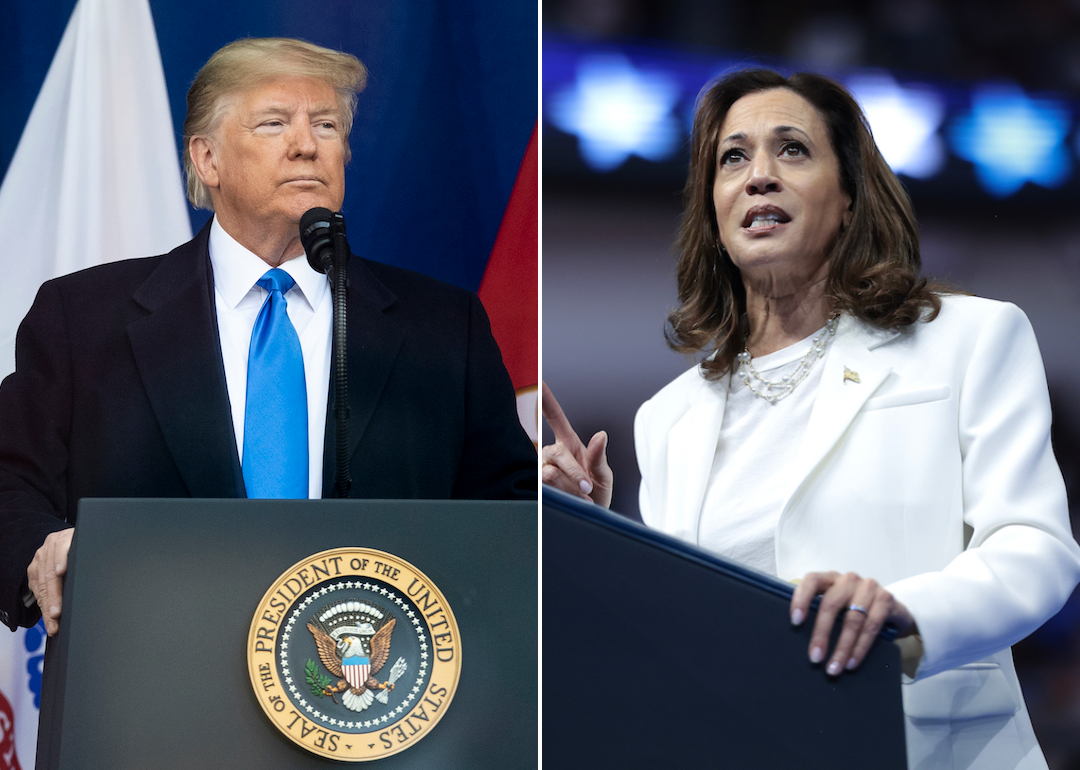
History of presidential debates
History of presidential debates
Democratic presidential nominee Kamala Harris and Republican presidential nominee Donald Trump will face off on the debate stage on Sept. 10 at 9 p.m. EST. This isn't Trump's first presidential debate of the campaign season—he debated President Joe Biden in June, which ultimately led to the end of Biden's reelection bid. However, it is the first time Trump will spar directly with Vice President Harris.
To contextualize the significance of the September matchup, Stacker looked back at the history of presidential debates. From their inception, forged in a senatorial debate between Abraham Lincoln and Stephen Douglas, to when safety precautions amid the coronavirus pandemic set the tone, presidential debates have punctuated their times. They have also dictated how the country moves forward through catastrophes and challenges, some of which are not so dissimilar to some of today's most pressing issues.
Keep reading to learn more about the history of presidential debates and how they've influenced our understanding of presidential elections today.
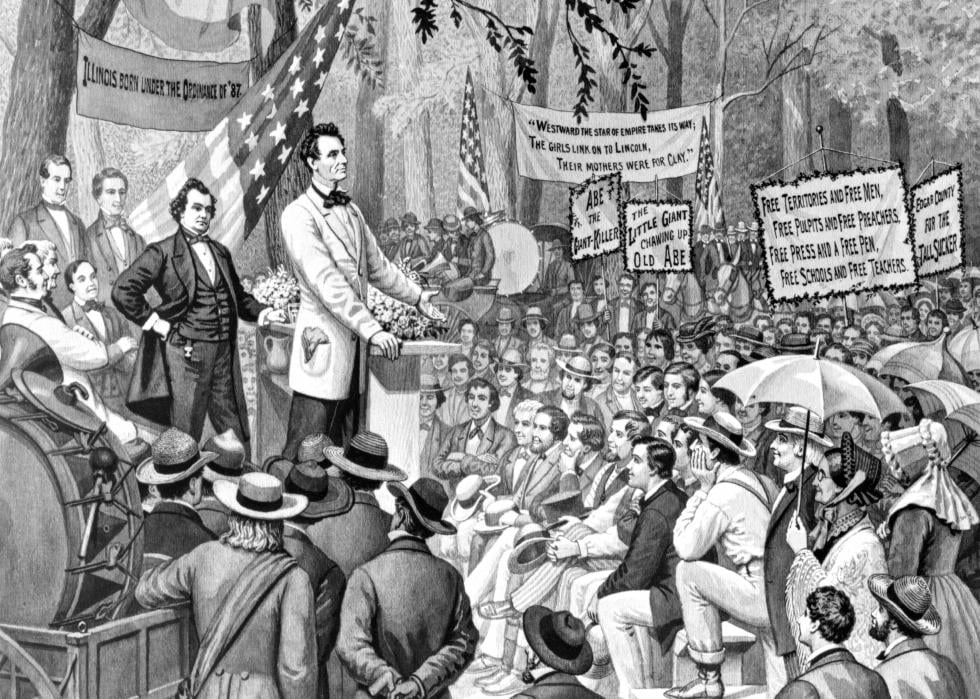
1858: Senatorial debate between Abraham Lincoln and Stephen Douglas
Presidential debates in the United States were inspired by a famous Illinois senatorial debate in 1858 between Abraham Lincoln and incumbent Stephen Douglas that was held without a moderator or panel. As Douglas campaigned around Illinois, Lincoln attended his opponent's campaign speeches and heckled Douglas from the crowd. Lincoln's antics drummed up sufficient attention, and finally he and Douglass met for a three-hour debate during which the men discussed slavery and various conspiracy theories.
Douglas won the Senate seat, and Lincoln didn't participate in any debates in 1860 during his run for president. Nevertheless, the men's debate set a stage for the use of debates in future election cycles. The 2016 debates between Donald Trump and Hillary Clinton were likened by many historians to the Lincoln-Douglas debate of 1858.
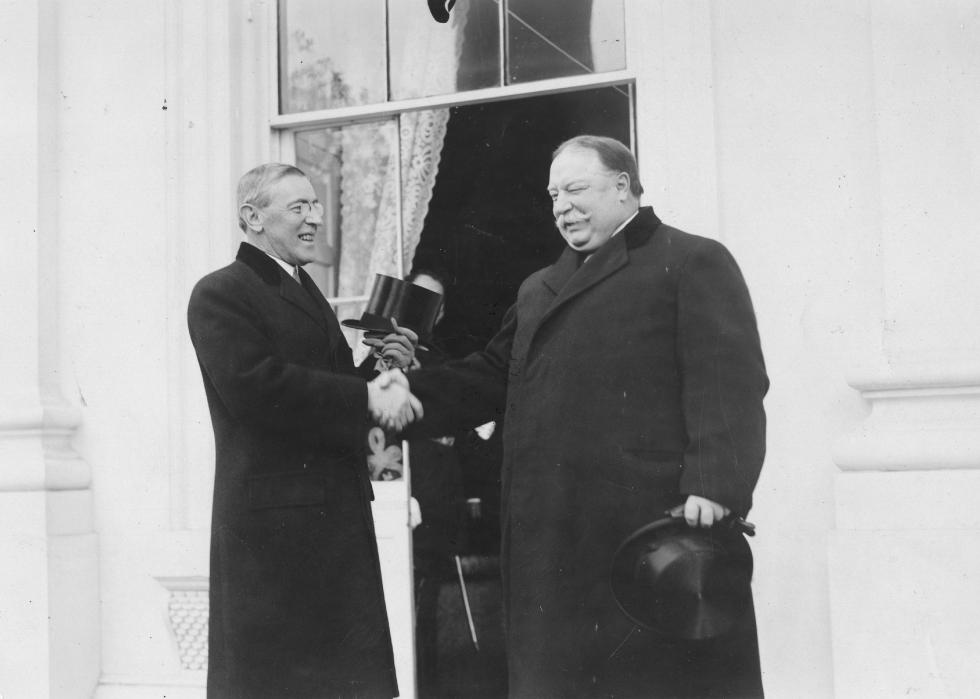
Debate-free presidential campaigns preside
More than a dozen election cycles passed without significant debates between candidates. Instead, presidential hopefuls responded to each other's comments during speeches along the campaign trail.
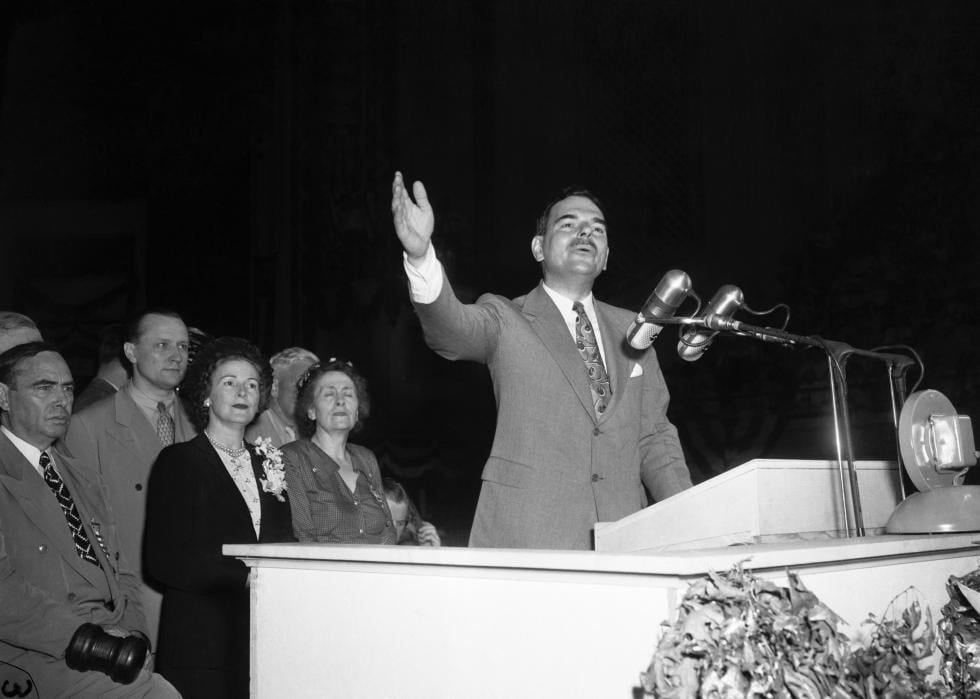
1948: Radio broadcast of Republican primary debate
Republicans Thomas Dewey and Harold Stassen participated in a presidential primary debate broadcast by radio. During the debate, the men traded barbs over the legal status of the Communist Party of the United States.
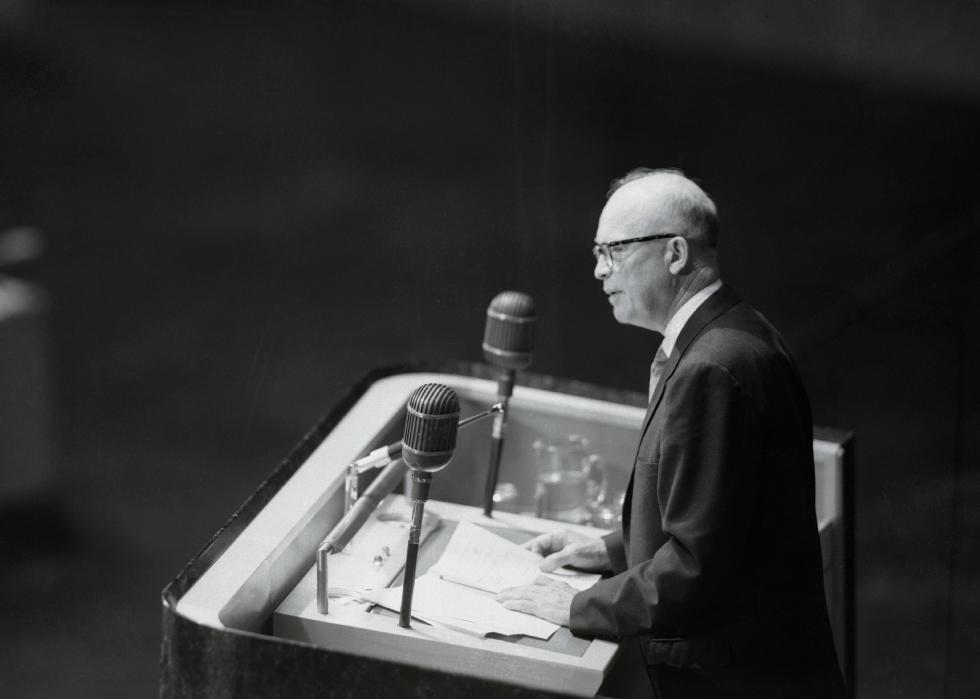
1952: First televised debate with all candidates
The League of Women voters in 1952 hosted the first televised presidential debate in American history for a nationwide audience. Every major candidate from both parties attended, standing in stark contrast to today's debates that include just the nominated candidate from each party.
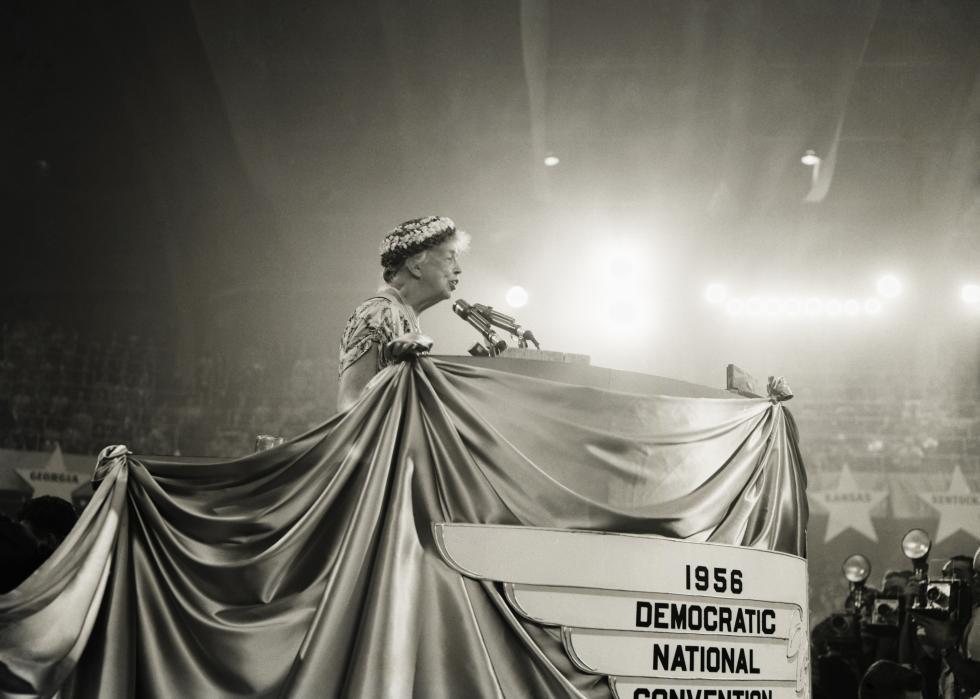
1956: First televised presidential debate for the two nominees
Democrat Adlai Stevenson challenged incumbent Republican President Dwight Eisenhower in 1956, but the debate for that election didn't include either of them. Surrogates former First Lady Eleanor Roosevelt and senior Maine Sen. Margaret Chase Smith debated on behalf of the Democrats and Republicans, respectively.
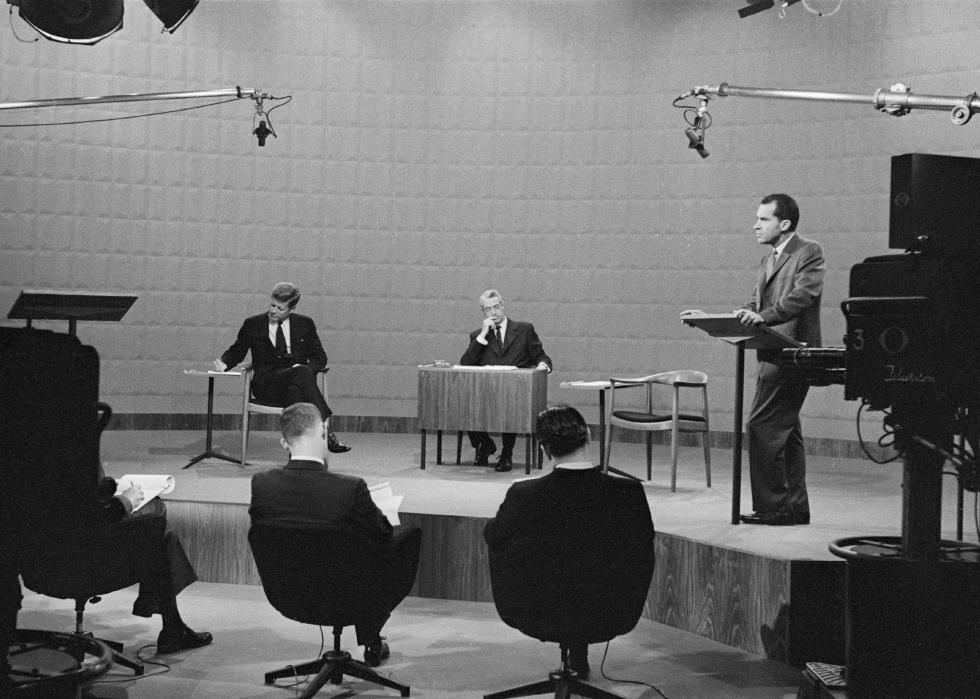
1960: The famous Kennedy-Nixon televised debates
Despite two other televised presidential debates in 1952 and 1956, the debates between Democrat John F. Kennedy and Republican Richard M. Nixon in 1960 are widely remembered as the first of their kind. Because of this series, debating was eventually seen as the norm in campaigns and became integral to running for president.
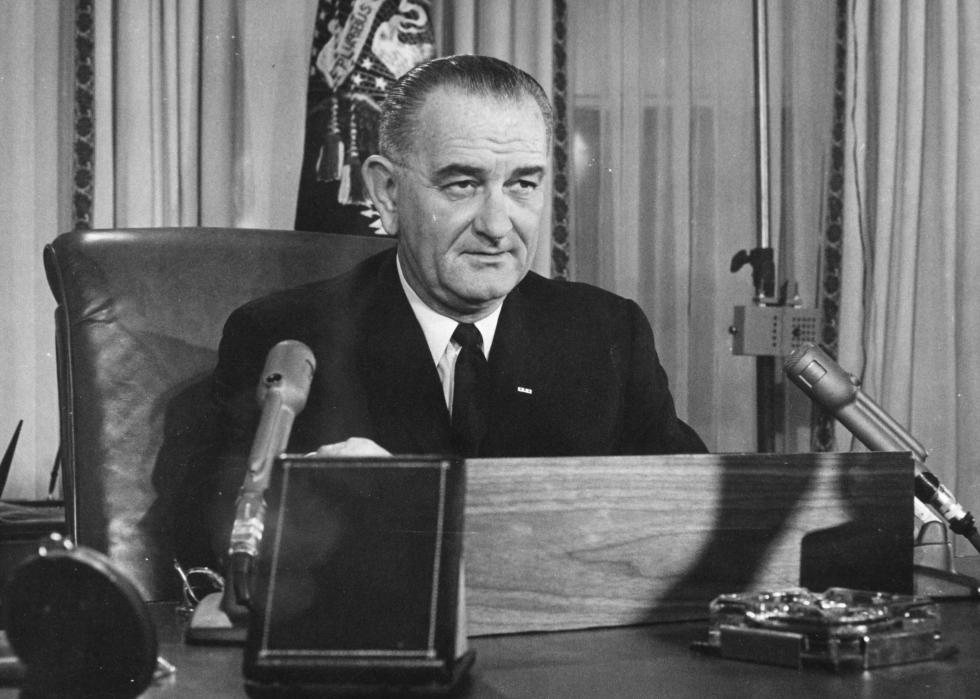
1964: Lyndon Johnson refuses to debate
Despite the popularity of the Kennedy-Nixon debates, President Lyndon B. Johnson turned down requests to debate the Republican presidential candidate Barry Goldwater in 1964. In so doing, Johnson touched off a 16-year period of no presidential debate series being held.
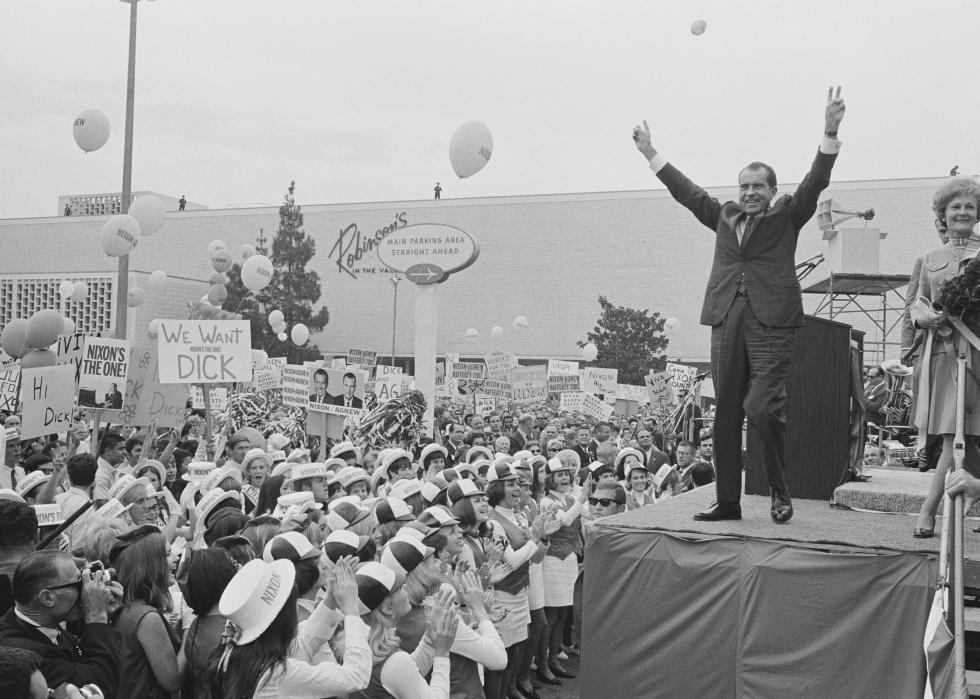
1968: Nixon won't debate
Following President Johnson's lead, Richard Nixon turned down the debate stage in 1968. He defeated Hubert Humphrey, the incumbent Democratic vice president, in the election. He repeated the move of refusing the debate in 1972, as well.
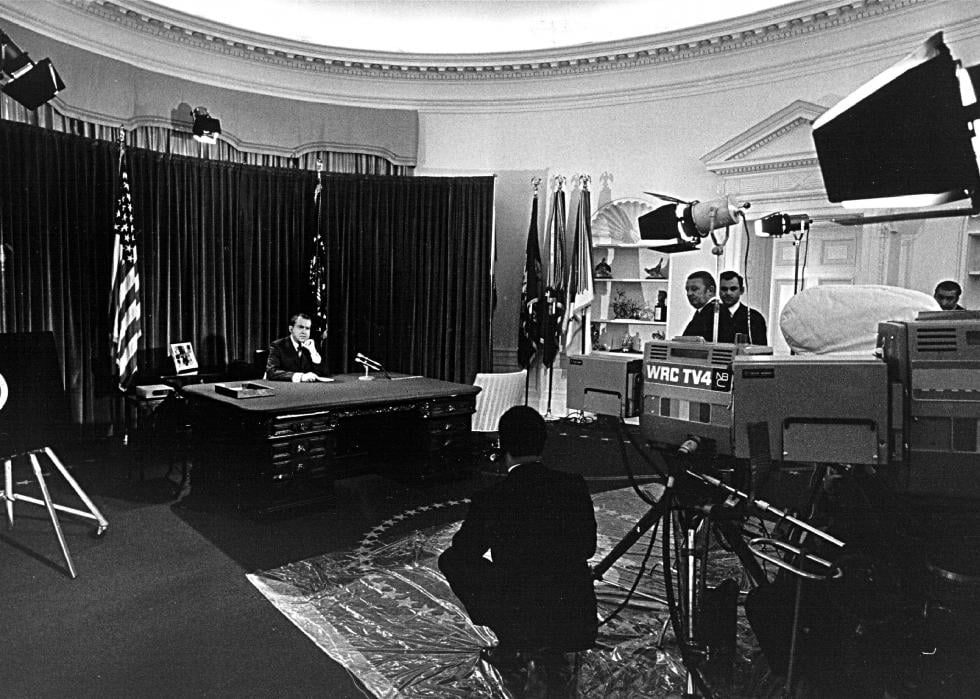
1970: Nixon overrides repeal of the equal-time rule in elections
In 1970, President Nixon overrode a bill that had repealed the equal-time rule of the Communications Act of 1934. The law mandated that national-level candidates be granted equal exposure in the media. In his actions, Nixon ensured that candidates could hobble their opponents by turning down the opportunity to debate.
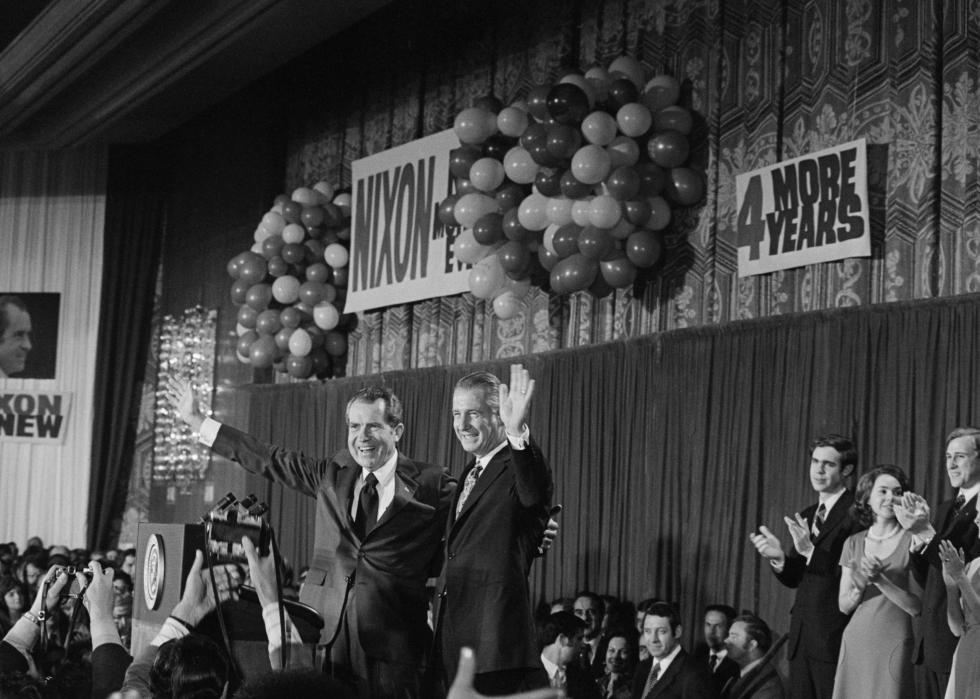
1972: Nixon refuses another debate
President Richard Nixon refused to debate his political opponent again in 1972. The incumbent coasted into reelection, defeating Democratic Sen. George McGovern.
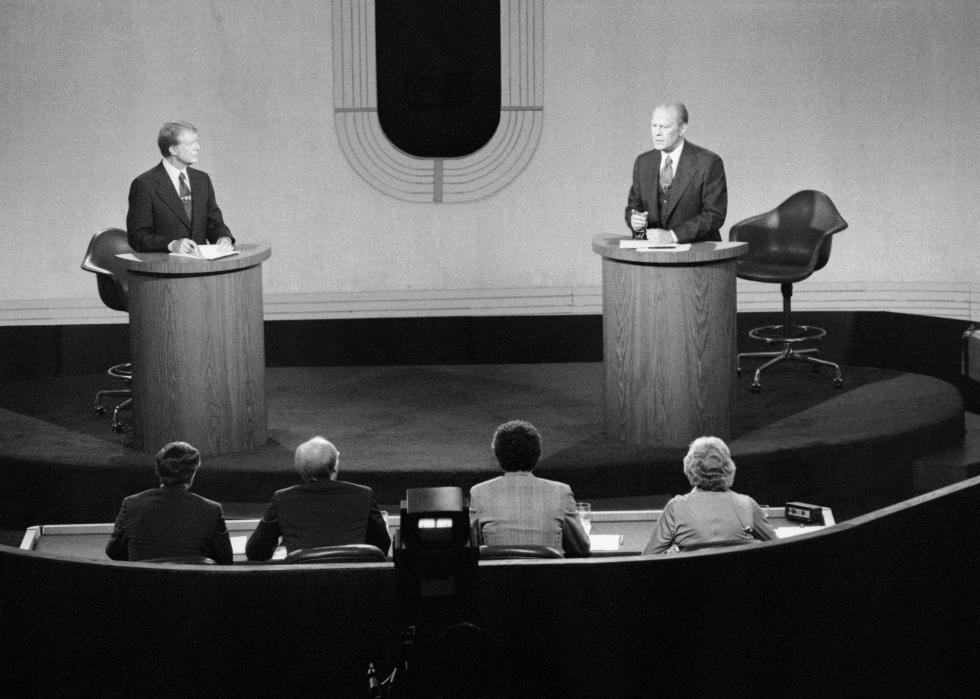
1975: League of Women Voters sets itself as '76 debate host
The League of Women Voters in 1975 scored the envied position of host for the 1976 presidential debates. The LWV hosted the event until 1984.

1976: Gerald Ford reinforces negative perceptions
Gerald Ford ascended to the presidency after Richard Nixon's vice president, Spiro Agnew, resigned amid the Watergate scandal, and then Nixon resigned following his impeachment. Ford pardoned Nixon, earning him mixed reviews among American voters. His time as president was filled with fumbles—literally—that included tripping down the steps of Air Force One in Austria and up those same steps in Michigan. He fed into his reputation at the 1976 debates.

1980: Jimmy Carter refuses to share a three-man stage
Democratic incumbent President Jimmy Carter in 1980 turned down the opportunity to debate with Republican nominee Ronald Reagan and Independent candidate John Anderson. The LWV went ahead with that debate without Carter.
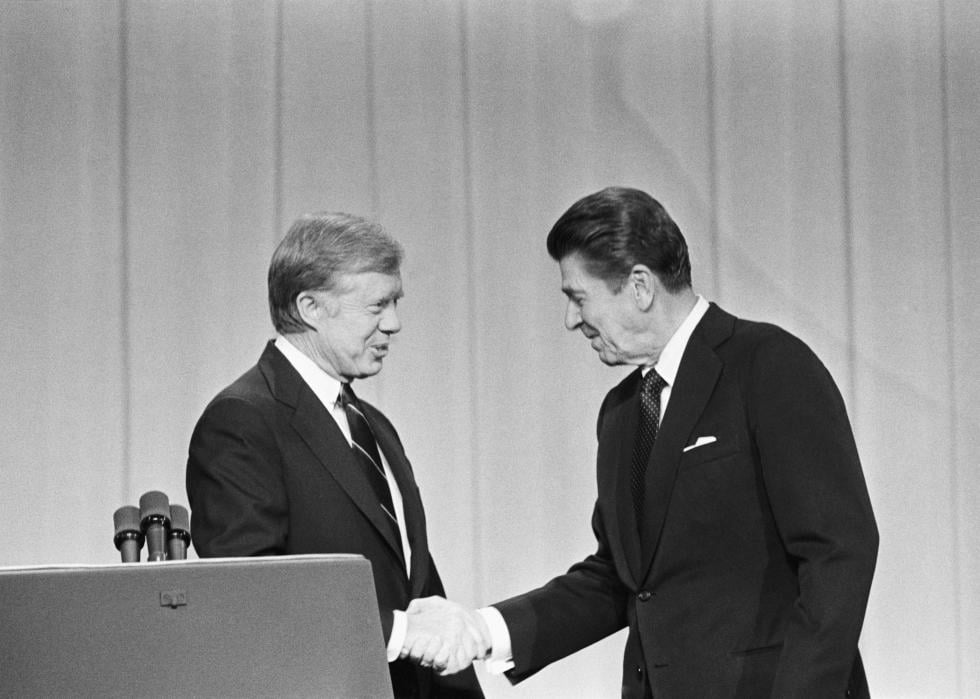
1980: Carter fails to land at his one debate
In the one debate Carter participated in on Oct. 28, 1980, against Republican Gov. Ronald Reagan, Carter was outperformed. Regan, a former actor, cozied up to the camera by flashing smiles and exuding relaxation anytime Carter threw jabs. Reagan famously addressed the crowd directly with his question "Are you better off than you were four years ago?" and enjoyed a landslide victory just seven days later.
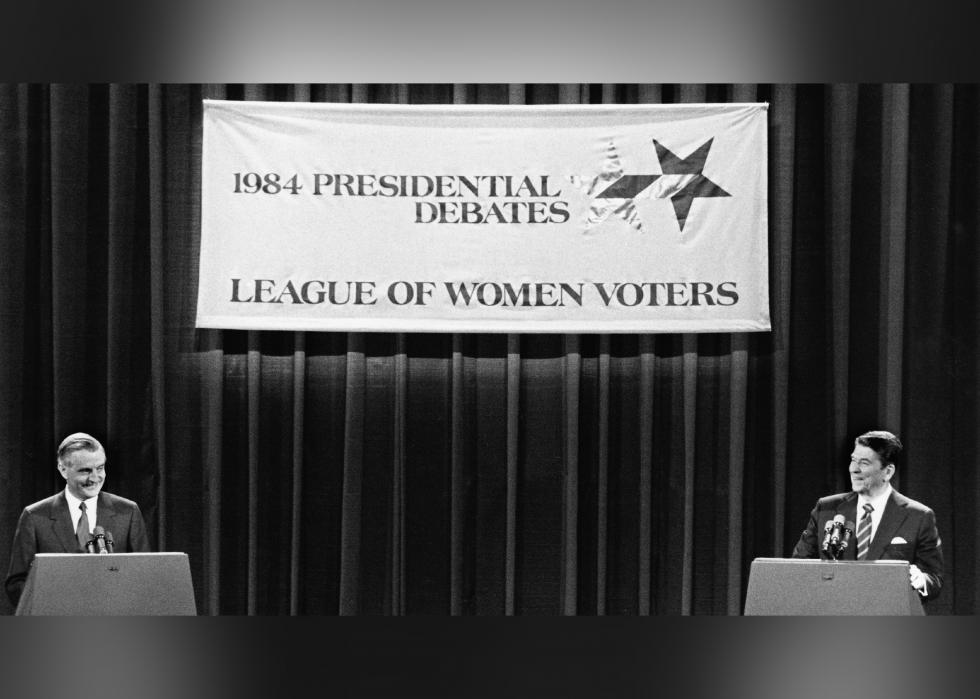
1984: Joint veto of nearly 100 debate panelists
Republican and Democratic parties reached an agreement ahead of the first 1984 presidential debate that led directly to a joint veto of almost 100 proposed panelists, namely journalists. The move was compared to a frat rush.
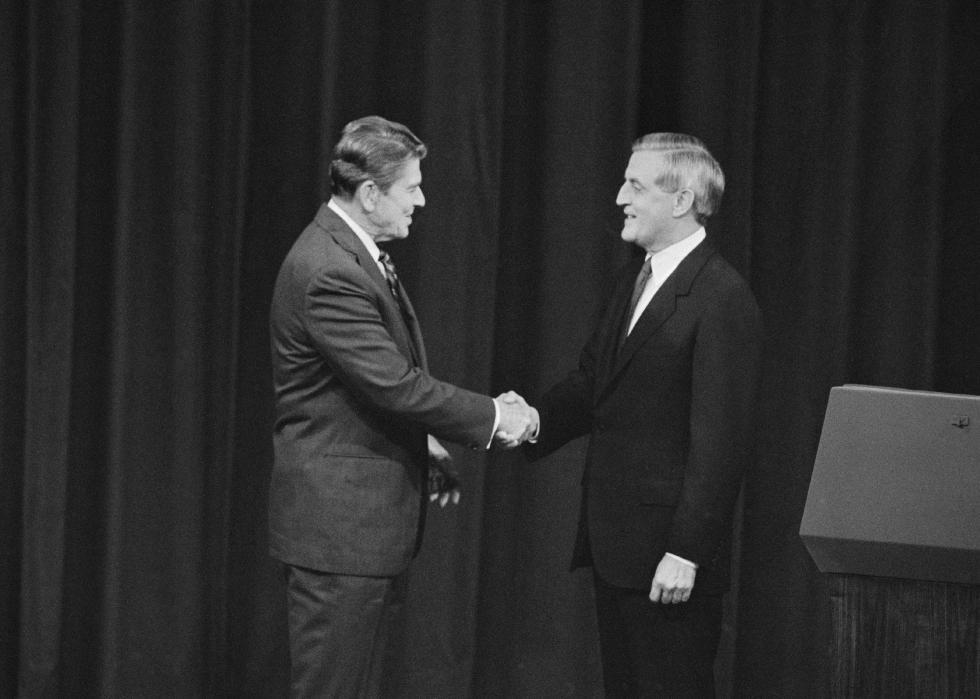
1984: Emphasis on Reagan's age
President Reagan's age became a point of contention at the 1984 debates. When he was asked about concerns over his advanced age, Reagan coolly flipped the conversation on its head, saying: "I want you to know that also I will not make age an issue of this campaign. I am not going to exploit, for political purposes, my opponent's youth and inexperience." His opponent in that debate was former Vice President Walter Mondale.
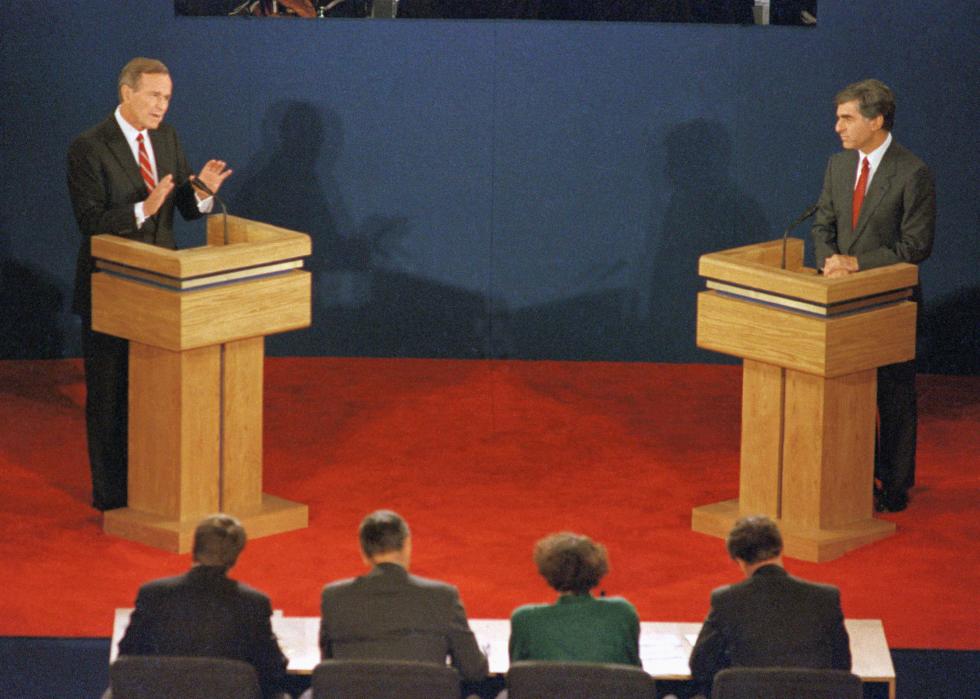
1988: Bush and Dukakis draft secret document
Campaigners for incumbent Vice President George H.W. Bush and Gov. Michael Dukakis met without the knowledge of the LWV to draft a secret "memorandum of understanding" that detailed permissible audience members and panelists while doing away with follow-up questions. The decisions effectively limited the reach of the LWV during the debates, removing the group's ability to have a say in how the debates were structured or held.
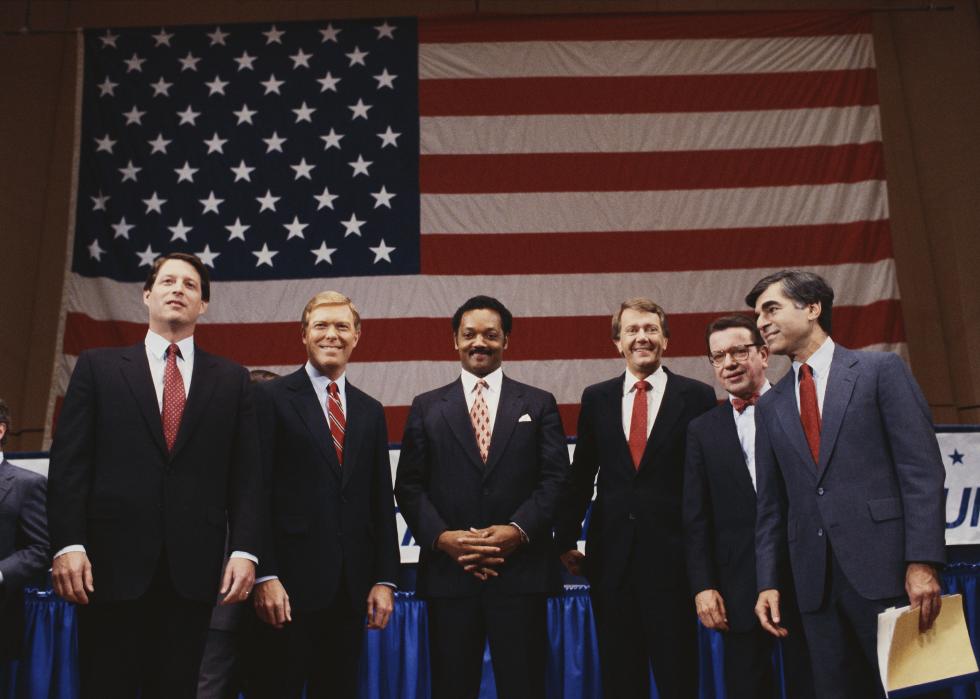
1988: Commission of Presidential Debates is new host
The bipartisan Commission on Presidential Debates in 1988 took over as presidential campaign host. From podium-height and room-temperature requirements to moderator selection, the CPD institutionalized and all but removed anything left to chance at these debates.
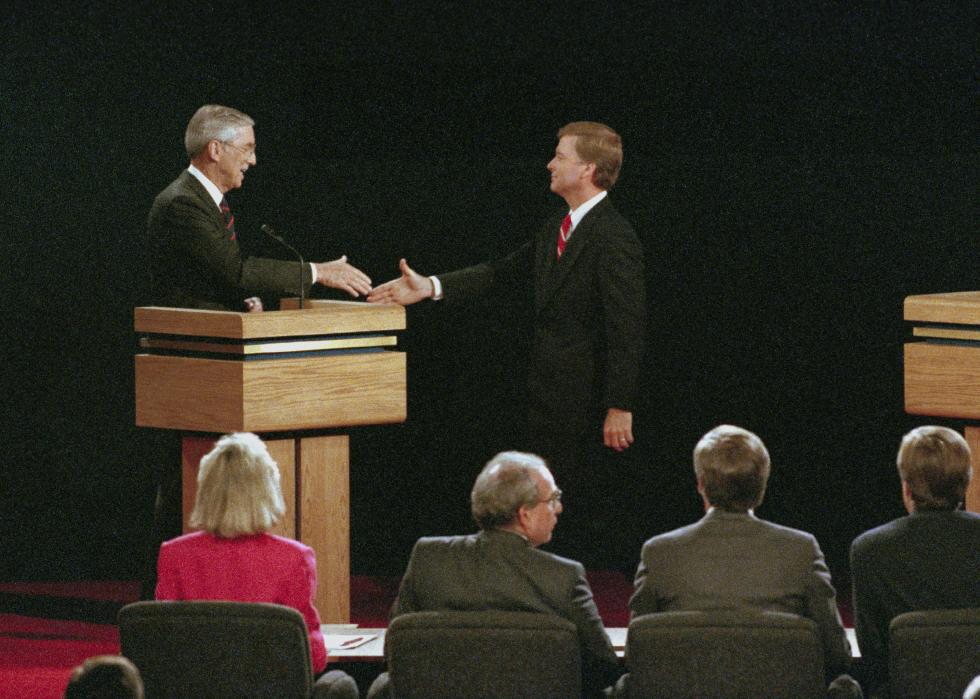
1988: The Quayle/Kennedy comparison flop
Sen. Dan Quayle, running as vice president under presidential candidate George H.W. Bush, in 1988 took the bold step of comparing himself to President John F. Kennedy during a vice presidential debate. Sen. Lloyd Bentsen took the opportunity to attack, saying, "I knew Jack Kennedy. Jack Kennedy was a friend of mine. Senator, you're no Jack Kennedy."
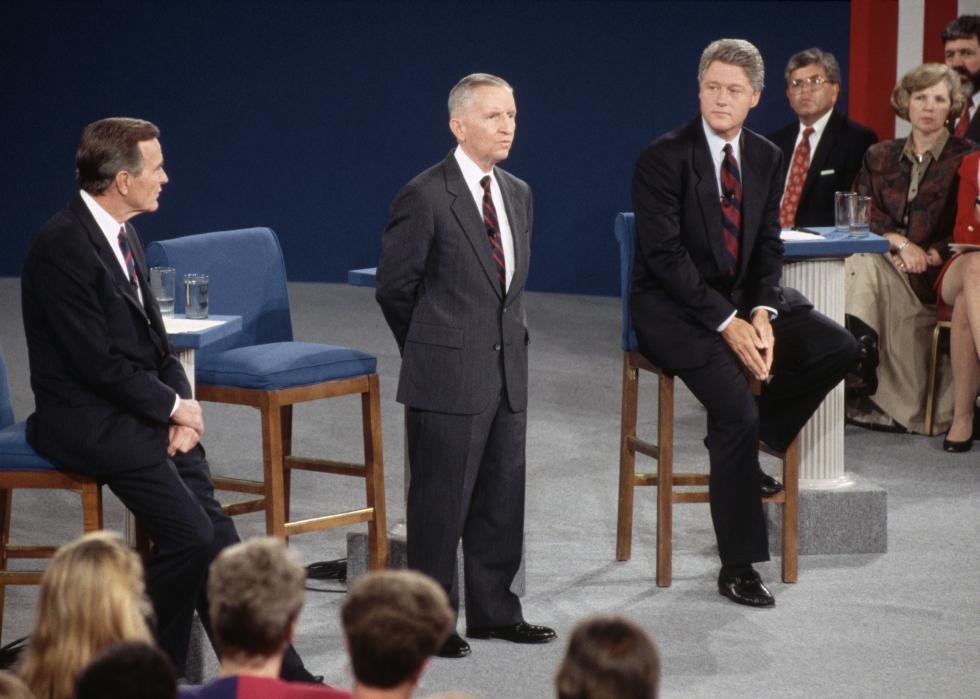
1992: Debates buoy Ross Perot
Reform Party candidate Ross Perot increased his percentage of favorable votes from 7% to 19% throughout the 1992 presidential debates. His gains represent the biggest jump in history for an American presidential candidate.
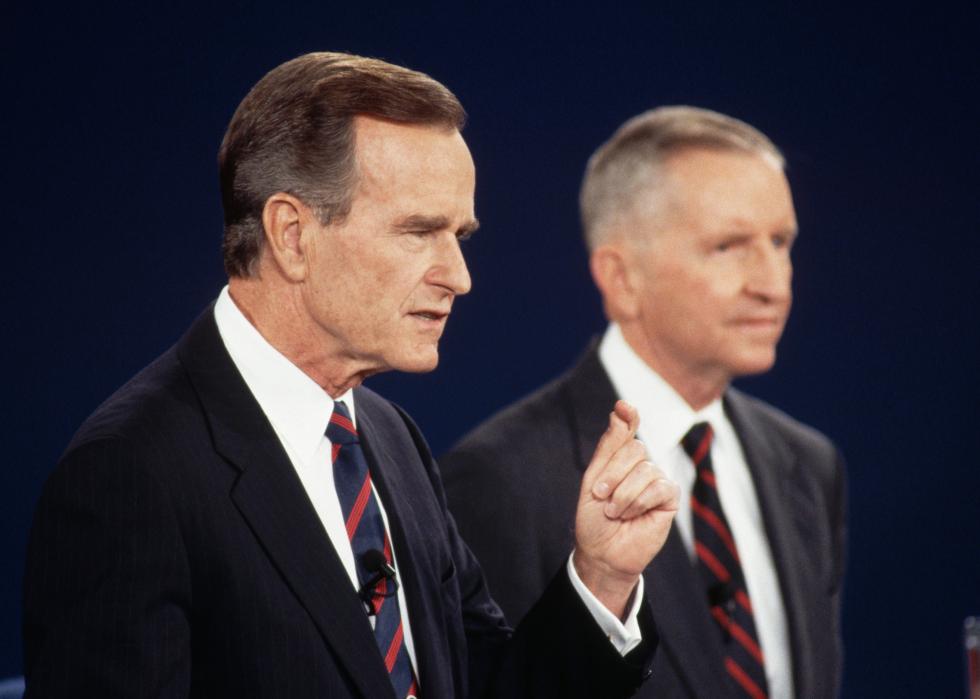
1992: President George H.W. Bush checks his watch
President George H.W. Bush was caught making a major debate faux pas in 1992 when he checked his watch repeatedly during a town hall debate as an audience member asked the president how he'd been personally affected by a deep recession. "Of course, you feel it when you're president of the United States; that's why I'm trying to do something about it," the president said in response, after straightening his jacket and looking at his watch, "by stimulating the export, vesting more, better education system."
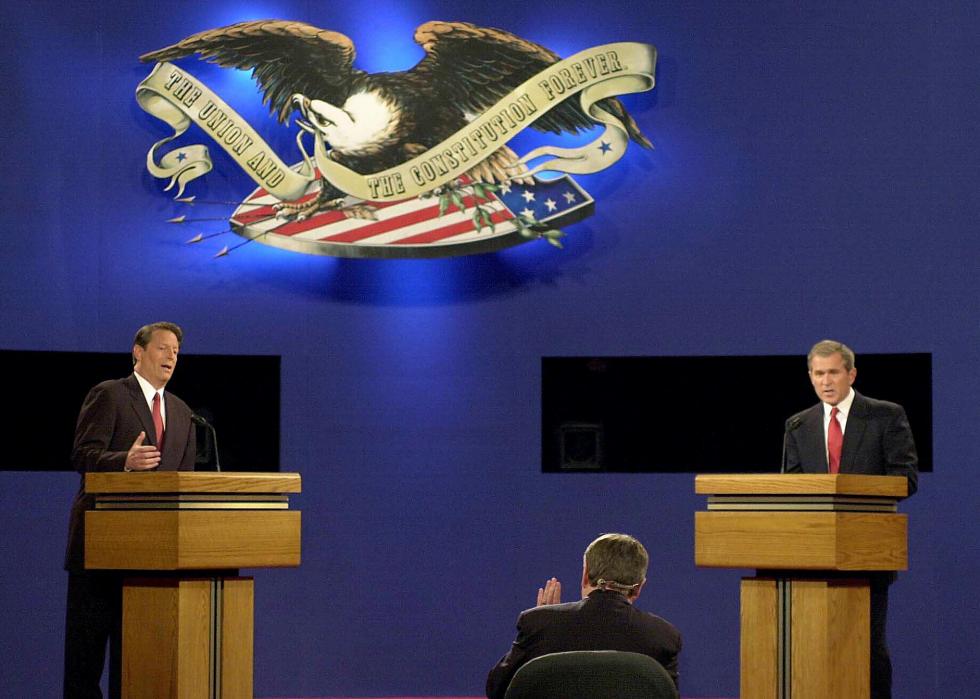
2000: Candidates need 15% support in polls to debate
The CPD in 2000 made a new debate rule requiring at least 15% polling support for candidates in order for them to be included in the national debates. Controversial from its inception, the rule all but guarantees a two-party debate stage.
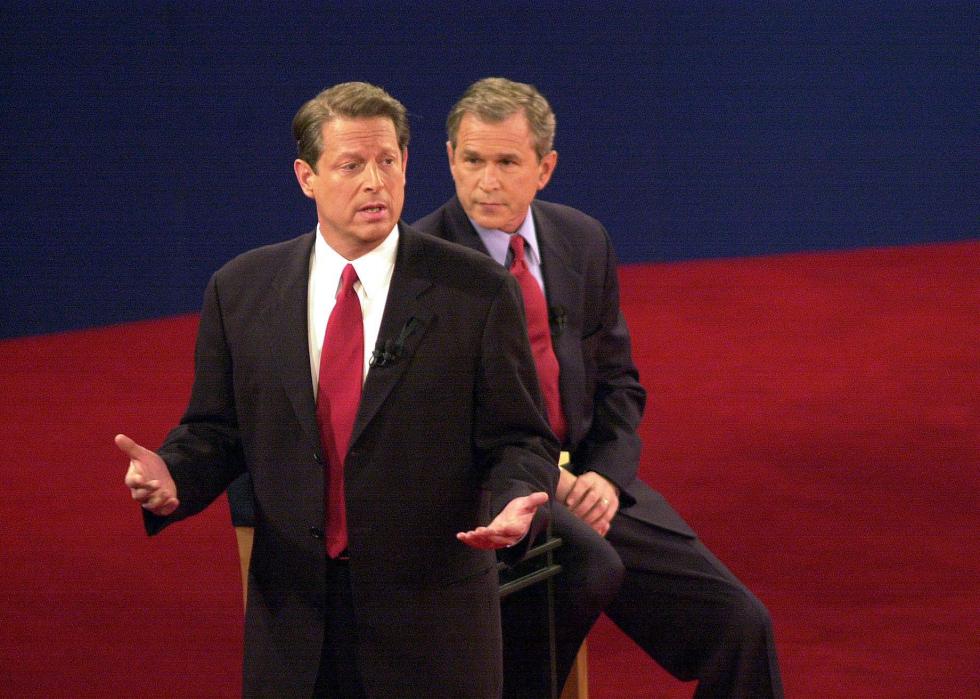
2000: Sen. John Kerry trashes debates
Ahead of his 2004 nomination as the Democratic nominee for president, Sen. John Kerry in 2000 said of the debates that year: "You could have picked 10 people off the street who didn't know Jerusalem from Georgia, and they would have had better questions." Kerry wasn't alone in his criticisms; others claimed one debate moderator allowed topics to get off-track and that, generally, the debate series lacked substance or focus.
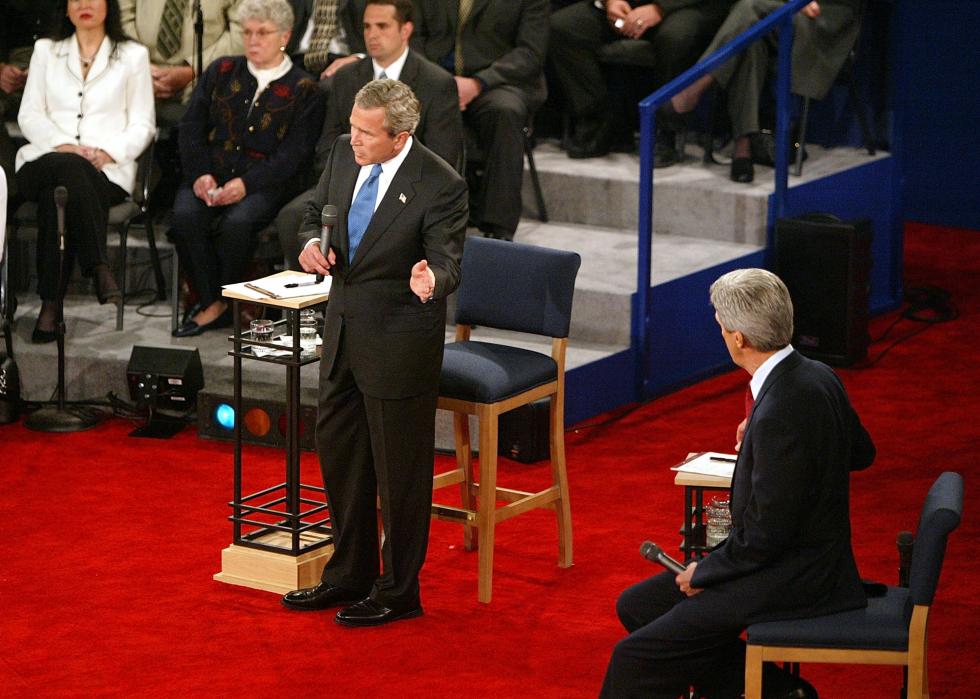
2004: TV networks ditch decorum, offer reaction shots
Reaction shots became a part of the presidential debates in 2004. Most notably, Republican incumbent George W. Bush was captured on screen as visibly irritated when the camera switched over to Democratic candidate Sen. John Kerry.
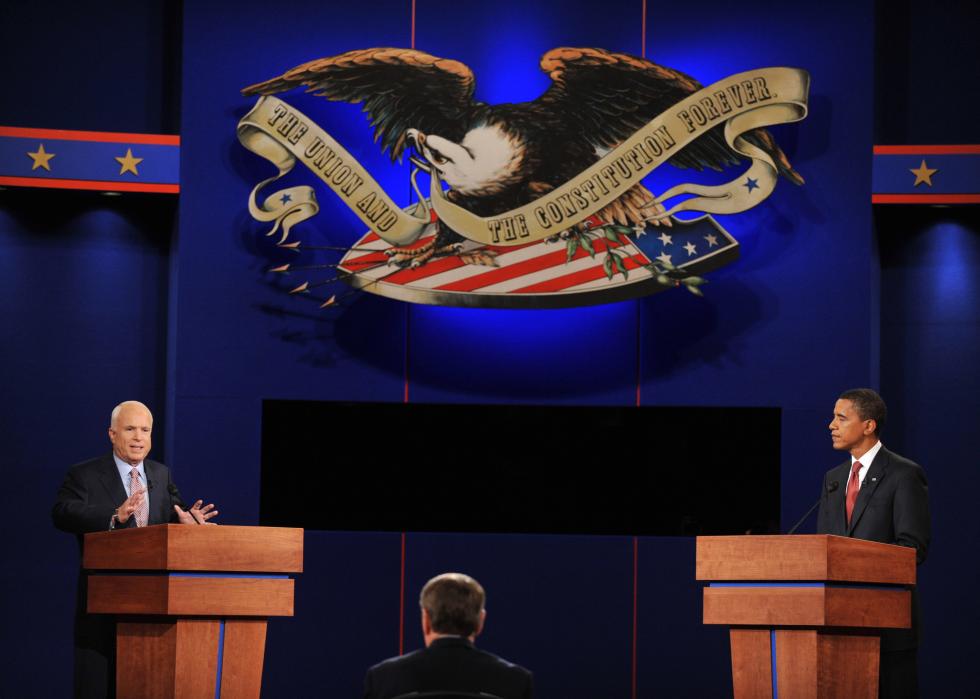
2008: Tech takes center stage
The 2008 debates are second only to the 1960s debates between Nixon and Kennedy for the significant role technology played. The presidential candidates were Republican Sen. John McCain and Democratic Sen. Barack Obama. Questions were submitted via YouTube and text messages, and even MySpace and Twitter played a central role.
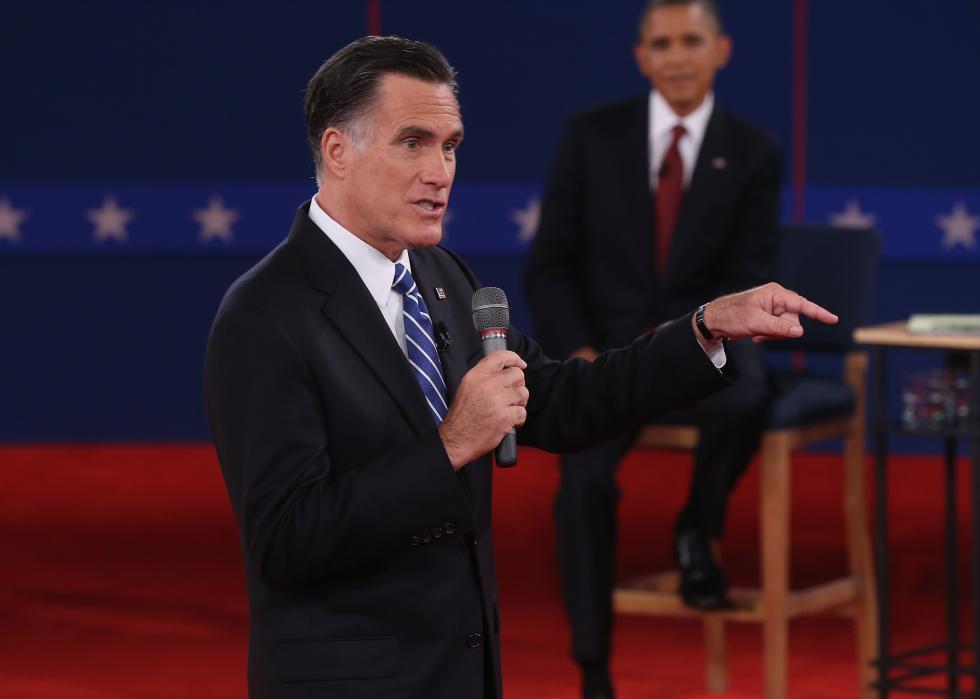
2012: Romney dominates
Republican candidate Mitt Romney outshone President Barack Obama in the first of three presidential debates in 2012, accusing the sitting president as "not getting the job done in government." The debate focused on the economy, taxes, and health care.
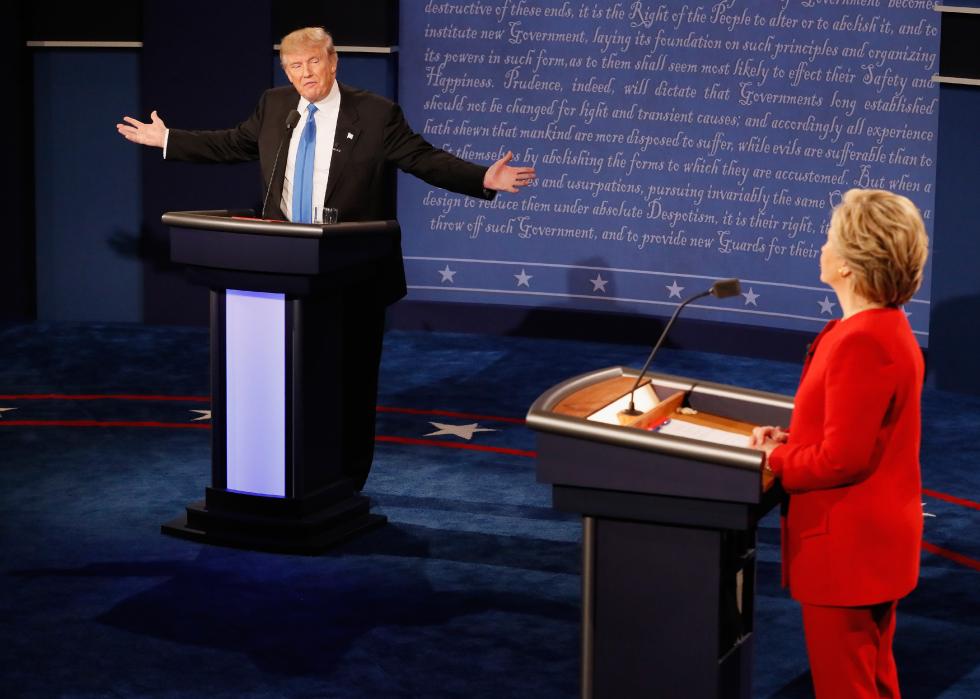
2016: Bullying on the debate stage
On the 2016 debate stage, Republican candidate Donald Trump relentlessly bullied former Secretary of State Hillary Clinton—a tactic attributed to Trump's attorney and mentor at the time, Roy Cohn. Trump promised, among other things, to send Clinton to prison.
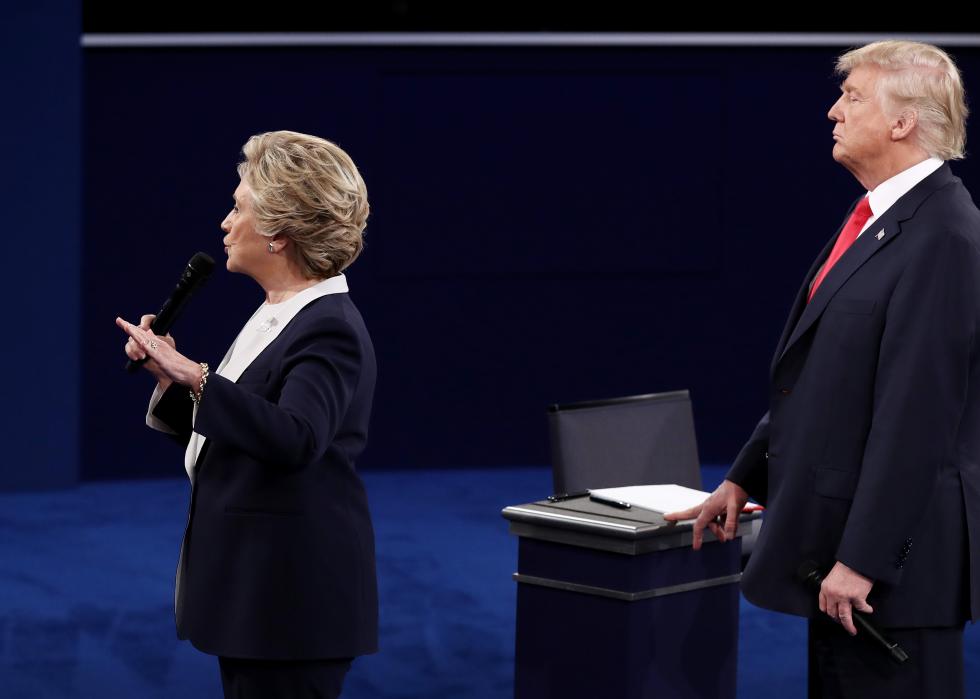
2016: Trump stalks Clinton
In their second 2016 presidential debate, Donald Trump wandered around behind Hillary Clinton exuding a sense of "prowling" as she addressed undecided voters. He went on to win the presidency despite Clinton clinching nearly 3 million more popular votes in the election.
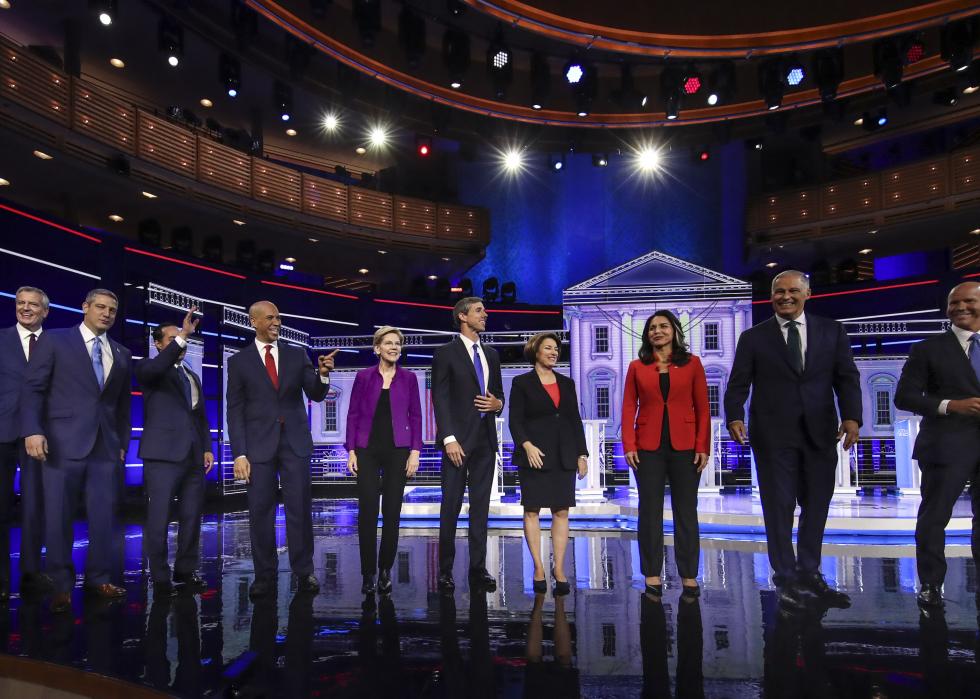
2020: #demssowhite
The Democratic debate stage started as the most diverse field of candidates in history. But by January 2020, the field had narrowed to a stage noticeably lacking candidates of color. The noticeable lack of diversity led to a trending hashtag: #demssowhite.
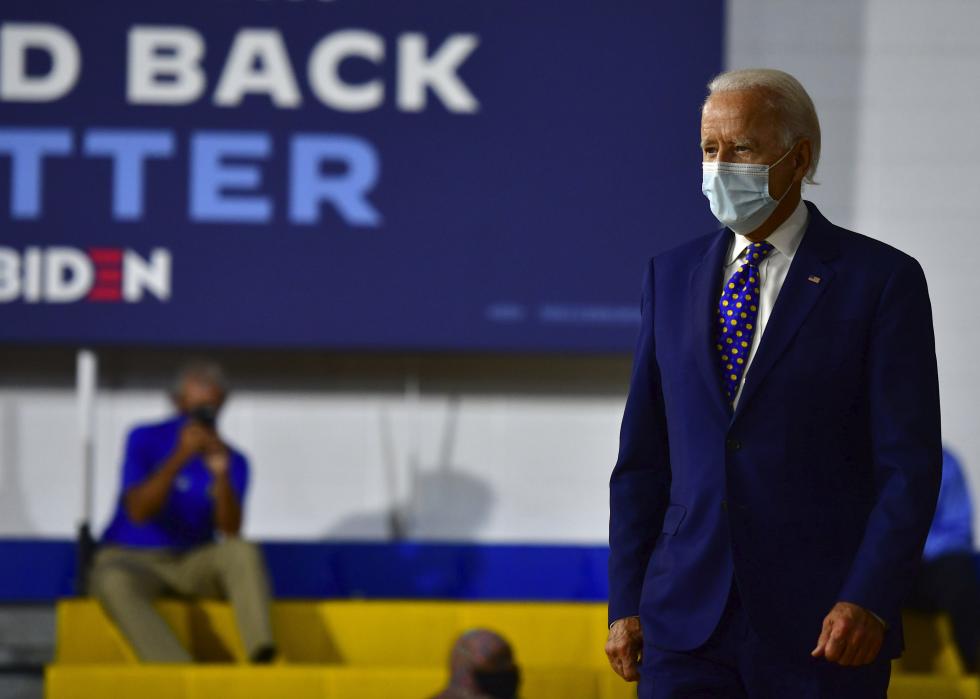
The coronavirus transforms debates
The coronavirus pandemic had already significantly shaped the layout of the 2020 debate series before Donald Trump himself contracted the virus on Oct. 12. During the first debate, Trump and Democratic candidate Joe Biden did not shake hands when they came out on the debate stage, and most—though not all—audience members wore masks and were screened for health issues.
For the vice presidential debate on Oct. 7 between Sen. Kamala Harris and Vice President Mike Pence, plexiglass dividers separated the candidates from each other and the moderator. The third Biden-Trump debate was canceled as Trump refused to participate virtually amid his diagnosis.
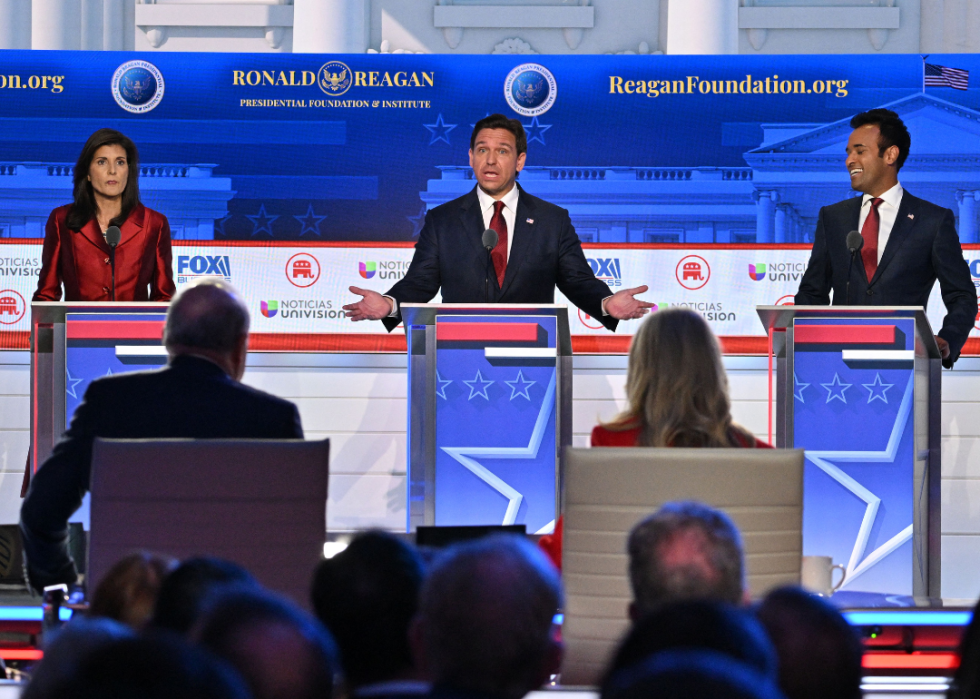
2023: A polarized country is less affected by debates
Debates today do less to move the needle among voters—a reality attributed to increased political polarization, shifting campaign strategies, debate-stage rules, and the 24-hour news cycle.
As the primary season heated up in 2023, the debate stage grew thin as many contenders were excluded due to various fundraising and polling requirements. With a trimmed-down roll call and former President Trump opting out, viewership slumped throughout the debate season. Meanwhile, Trump continued to poll with well over 50% support despite his lack of attendance.



